
Daulat Rahman/Guwahati
Dr. Anwaruddin Choudhury, who retired as the Commissioner-Secretary to the Government of Assam, was not just a file-pushing civil servant. Instead of sitting at his cozy office, he chose a different path to bring about changes in the wildlife of Assam.
After completing his official duty, this bureaucrat did not go home; he roamed in the wild checking on the births and exploring ways to save them. Eventually, he acquired the nickname “The Birdman of Assam”.
Shy of publicity, Dr. Choudhury is the first one in Assam to write books on the birds of the North Eastern States. His studies have contributed to the conservation and awareness of various bird species in the region. He is the author of over 30 books, 50 technical reports, and more than 900 articles and scientific papers.
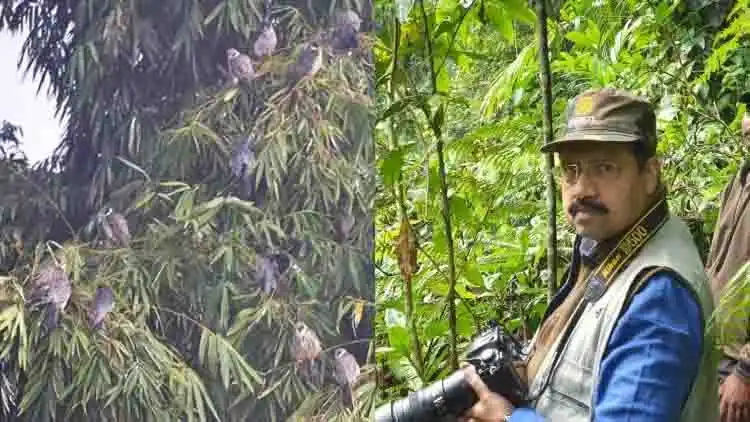 Dr. Anwaruddin Choudhury in Kane Wildlife sanctury, Arunachal Pradesh
Dr. Anwaruddin Choudhury in Kane Wildlife sanctury, Arunachal Pradesh
Choudhury, 67, had played a pivotal role in protecting habitats and declaring the white-winged wood duck as the State bird in Assam way back in 2003. This bird was once considered endangered by the International Union for Conservation of Nature (IUCN). As on date today the State has over 1,300 white-winged wood ducks.
After his retirement, Dr Choudhury could have easily spent a luxurious life with his family. Instead, he used all his time to work on and write about the conservation of nature. He has finished a project on the Amur Falcon, a migratory bird that flies from Assam to South Africa and has its breeding place in eastern Siberia.
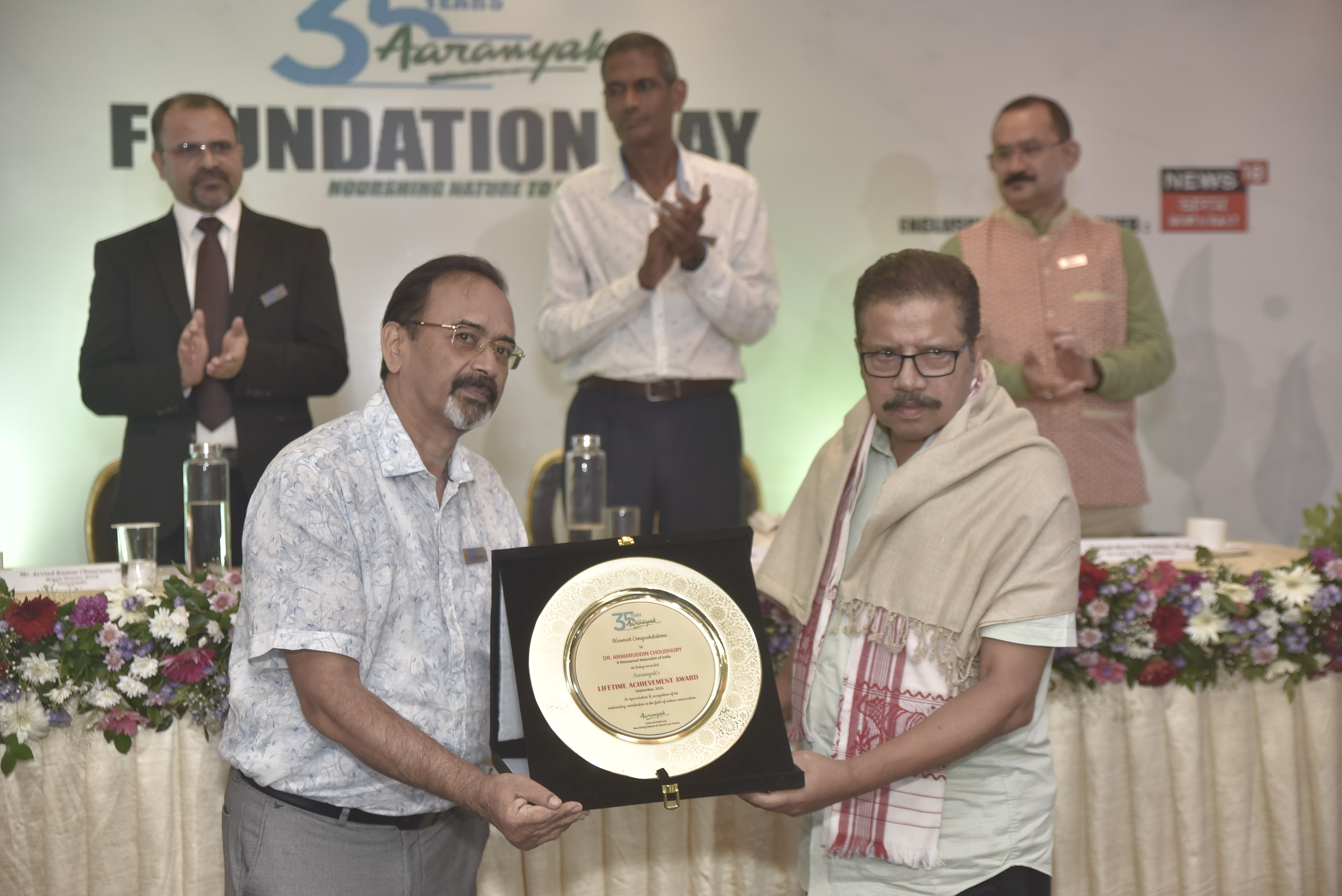
Dr. Anwaruddin Choudhury being felicitated
The Amur Falcon, Falco amurensis is a long-distance migrant that breeds in the basin of the Amur River in eastern Siberia, Mongolia, and adjacent areas and migrates to Africa for winter. The migrating falcons pass through north-eastern India and then fly over peninsular India and the Arabian Sea. En route, these falcons roost at some select sites in Nagaland, Manipur, Assam, and Meghalaya often in thousands and lakhs.
“Poachers used to catch them with bare hands in the Karbi Anglong district in Assam or with nets in Nagaland or shoot them with guns, air guns, or slingshots,” Dr Choudhury said.
According to Choudhury, there are several sites in Assam, where Amur Falcons could be seen during their migration, but it is only at a few that they roost overnight in large numbers in different areas in West Karbi Anglong district and Umrangso in Dima Hasao (North Cachar Hills) district.
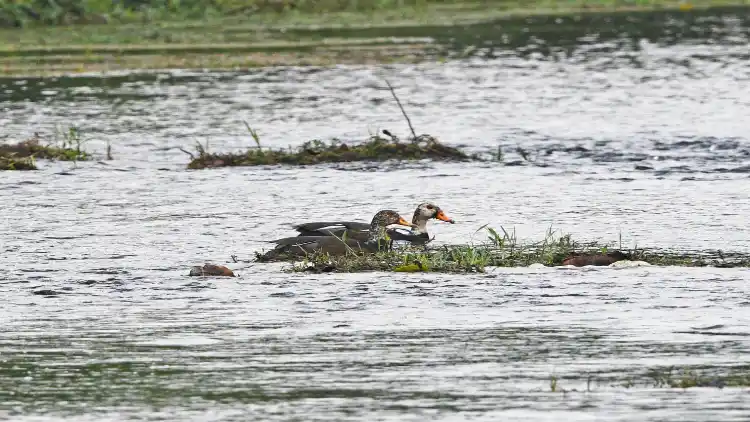
A Pair of Winged Wood Duck
An awareness drive was carried out in 1996 at Habang after which the catching/killing came down. A similar campaign by Dr Choudhury in Nagaland’s Mokokchung district in 2004 resulted in the reduction of hunting at Changtongya where large numbers used to roost.
Dr Choudhury has to his credit some authoritative works on the wilds of the Northeast. His comprehensive checklist on the birds (1990) and a detailed book on birds (2000) of Assam bridged a gap of almost a century since A.O. Hume and Stuart Baker first compiled their lists.
Some of his other books are: Bird Books of Arunachal Pradesh, Nagaland, Mizoram and Meghalaya, and the first monograph of wild water buffalo (2010), A comprehensive mammals of North-east India (2013), mammals of India (2016) and Manas: India’s world heritage in danger (2019).
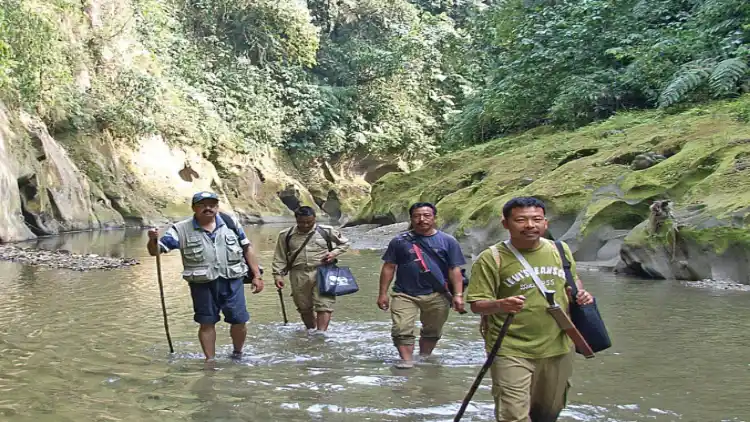 Dr. Anwaruddin Choudhury with his team in raiunforests of upper Assam
Dr. Anwaruddin Choudhury with his team in raiunforests of upper AssamWay back in 1996, Dr. Choudhury, while on a visit to a market in Kohima in Nagaland, saw a row of unusual items up for sale right outside the town hall. Frogs, rats, deer, birds, a bamboo partridge, a Chinese pangolin, and a pig-tail macaque were among the foods being offered to buyers. The women were selling the game brought home by their hunter husbands.
Disturbed by the sight, Dr Choudhury got in touch with an NGO - the People's Group of Nagaland - and went on to convince the authorities to declare a ban on the sale of wild animals in the breeding season.
Dr Choudhury's extensive travels across the North East have enabled him to act as a good samaritan in other ways too. 30 years ago he came across Sarsing Rongphar, a 50-year-old Karbi tribal who killed wild animals and sold their flesh for a living. Choudhury persuaded Rongphar to give up hunting and got him a job with the Forest Department.
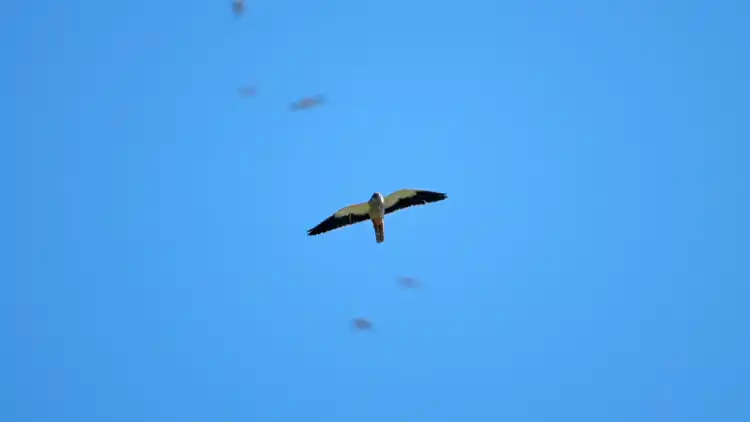
Male Amur Falcon
During his posting as Deputy Commissioner of Baksa district in Eastern Assam, Dr Choudhury persuaded many poachers who were operating in Manas National Park to lay down their arms, which has been replicated later on elsewhere.
Dr Choudhury’s passion and love for wildlife had forced the Assam Government to allow a government servant to join an NGO. “It was a path-breaking event in Assam. It was a unique arrangement in which a government official was deputed to an NGO. I am still grateful to late Hiteswar Saikia, then the Chief Minister of Assam, and late Jatin Hazarika, bureaucrat-turned adviser to the Chief Minister,” he said.
ALSO READ: At 89, Rickshaw puller Ahmed Ali is not done with building schools
The hope of uncovering many other unexplored ecological hotspots in Assam and other parts of the North East drives him on. "I have plans to visit Bhutan, eastern Nepal, southern Tibet, north and western Myanmar, and eastern Bangladesh," Dr Choudhury said with a lot of energy and zeal.
